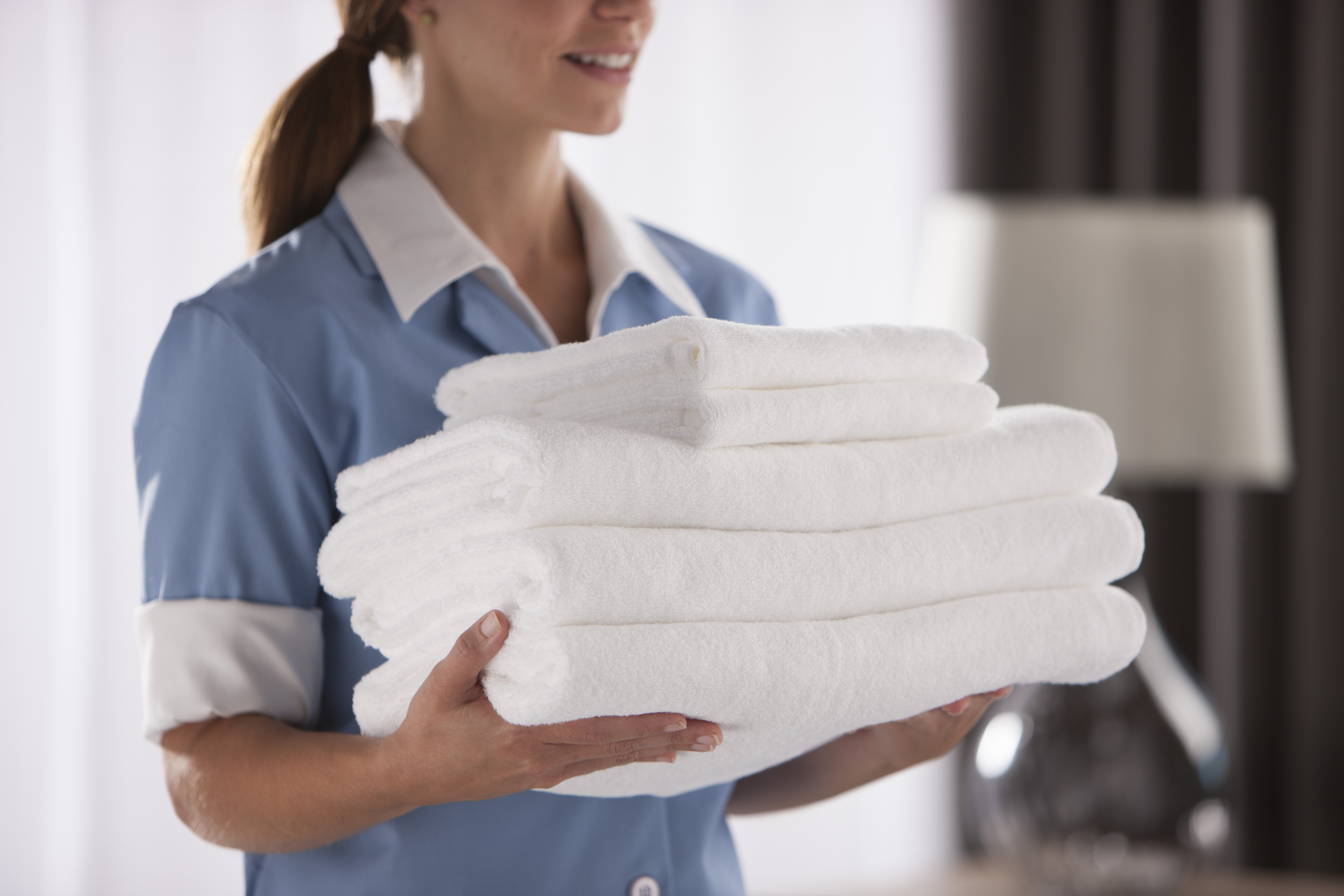
By Rick Murphy – Sales Manager, Whirlpool Corp. Commercial Laundry
Want to know how to hinder the hospitality industry? Inefficient laundry equipment. And for staff, inefficient processes mean less productivity. And less productivity? We’re all thinking it—less money for your business and your bottom line. Fortunately, this can be easily fixed. To ensure a productive staff and operational structure, equipment—and where that equipment is placed—should be carefully considered.
In this article, we will go over some of today’s trends, including efficient on-premises laundry (OPL) equipment options, and simple preventative maintenance tasks that will help owners and operators maximize daily wash and dry processes.
Equipment and Maintenance
Energy and water savings are major purchase drivers, so it only makes sense that a leading trend within the OPL segment is energy- and water-efficient equipment. As owners and operators continue to become more and more knowledgeable about conserving water and energy, they better understand how the products used are impacting the environment and their bottom line. Because of this, there is an increased demand for manufacturers to engineer technology-driven equipment that conserves precious resources and boosts profits.
So, now that we’ve acknowledged there’s a need for energy-efficient equipment, how do you know what products to select? There’s certainly a lot of options, but first and foremost, it’s important to note that technology continues, and will continue to, drive innovation and efficiency in commercial laundry. Today, there’s an effort to incorporate high speed, multi-load washers into a facility as part of a larger product lineup. These multi-load machines extract water in the washer instead of the dryer, allowing linens to dry more quickly and gently, while decreasing the amount of energy consumed. For the highest level of performance, facility owners and managers should look for soft-mount washers with a G-force (G), or spin speed, of at least 350. Higher G-force simply means more water is removed. For example, a 55-pound washer operating at 100 G will leave about 50 pounds of water to be extracted in the dryer. A 350 G washer, however, will only leave 33 pounds of water—which helps to reduce dry times and save linens from additional wear. Now that’s improved efficiency.
But washers aren’t the only smart option. Today’s multi-load dryers come in a range of sizes and can accommodate loads of more than 170 pounds. Opting for a dryer with Residual Moisture Control (RMC) helps to ensure maximum efficiency. The technology allows the amount of moisture to be sensed in a load and reduces the heat input while the tumbler continues to run. In addition, dryers with high-performance airflow distribution systems, and sufficient insulation and sealing prevent the leakage of heated air. This combination ensures linens dry fast and efficiently, while safeguarding linens from over-drying, prolonging their life.
From a maintenance standpoint, stainless-steel washers require little attention, and while the best routine cleaning information will always come from the manufacturer and a reliable distributor, there are some general preventive maintenance tasks that can help extend the life of a machine. For starters, clean inlet hoses on a regular basis. When debris blocks the inlet hose screen, fill times increase and loads take longer to complete. That means more utilities will be consumed, and more hours will be spent on labor. In addition, wiping down machines and cleaning detergent dispensers on a regular basis will contribute to equipment longevity.
The primary goal of dyer maintenance is to guarantee that nothing is blocking the flow of combustion and air ventilation. Even the smallest obstruction, especially when it’s lint, can contribute to longer dry times, increased energy consumption, and additional costs for replaced linens and service calls. Want an easy fix? Implement a regular cleaning schedule, empty lint trays after each load, and clean dryer cabinets and exhaust vents at least once a month. We’ll talk about this later, too.
In Part two of Put That Same Ol’ Laundry Regimen Through the Ringer we’ll review the right mix of machines to ensure maximum efficiency.
——
Photo Credit: Whirlpool Corp. Commercial Laundry

About the author: Rick Murphy is sales manager for Whirlpool Corporation Commercial Laundry, representing Maytag® Commercial Laundry, ADC and Whirlpool® Commercial Laundry.












